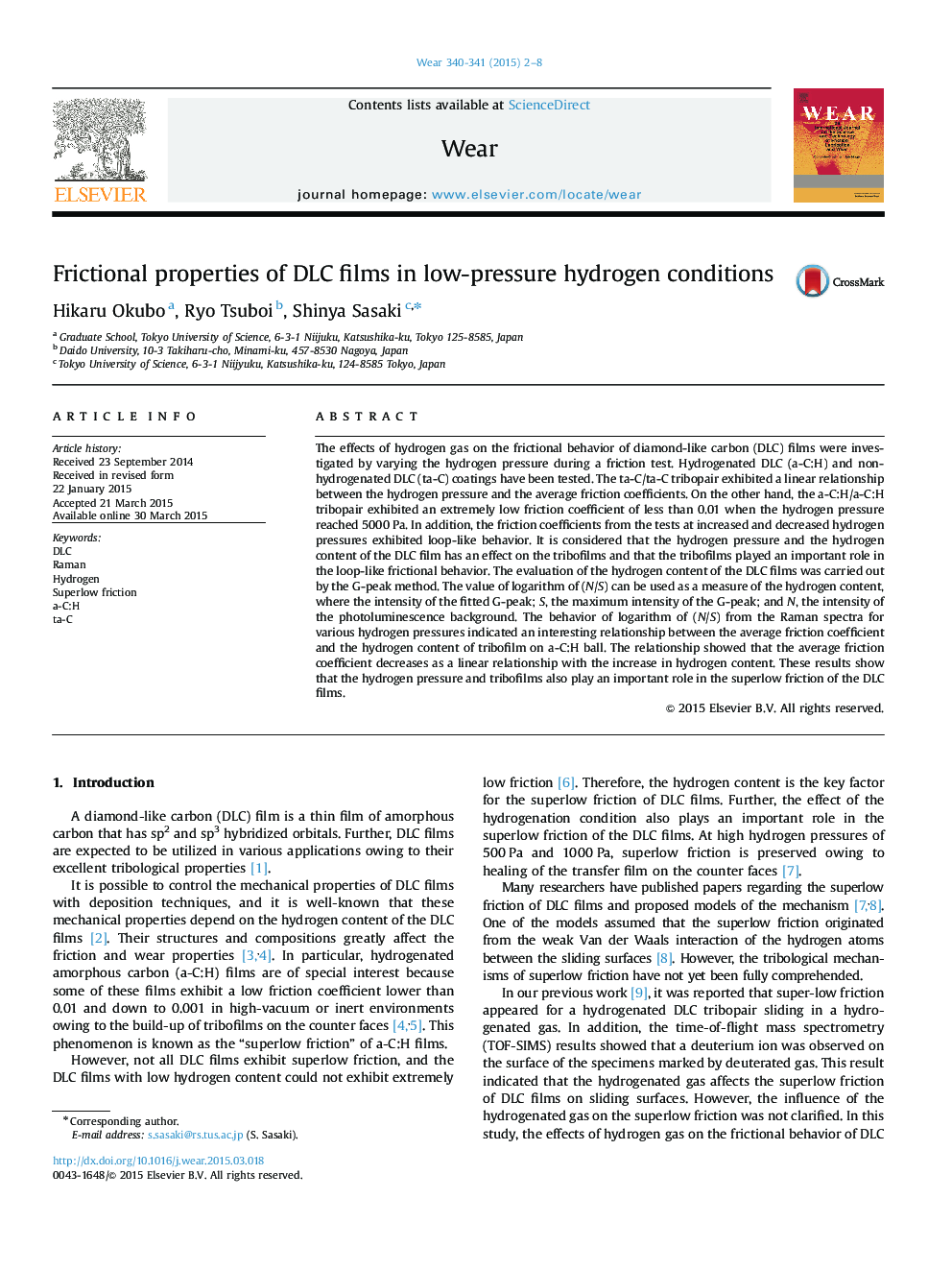| Article ID | Journal | Published Year | Pages | File Type |
|---|---|---|---|---|
| 617037 | Wear | 2015 | 7 Pages |
•The friction behavior of ta-C and a-C:H varied depending on hydrogen pressures.•The a-C:H showed superlow friction when the hydrogen pressure reached 5000 Pa.•The friction coefficient decreased with increment of hydrogen within tribofilm.
The effects of hydrogen gas on the frictional behavior of diamond-like carbon (DLC) films were investigated by varying the hydrogen pressure during a friction test. Hydrogenated DLC (a-C:H) and non-hydrogenated DLC (ta-C) coatings have been tested. The ta-C/ta-C tribopair exhibited a linear relationship between the hydrogen pressure and the average friction coefficients. On the other hand, the a-C:H/a-C:H tribopair exhibited an extremely low friction coefficient of less than 0.01 when the hydrogen pressure reached 5000 Pa. In addition, the friction coefficients from the tests at increased and decreased hydrogen pressures exhibited loop-like behavior. It is considered that the hydrogen pressure and the hydrogen content of the DLC film has an effect on the tribofilms and that the tribofilms played an important role in the loop-like frictional behavior. The evaluation of the hydrogen content of the DLC films was carried out by the G-peak method. The value of logarithm of (N/S) can be used as a measure of the hydrogen content, where the intensity of the fitted G-peak; S, the maximum intensity of the G-peak; and N, the intensity of the photoluminescence background. The behavior of logarithm of (N/S) from the Raman spectra for various hydrogen pressures indicated an interesting relationship between the average friction coefficient and the hydrogen content of tribofilm on a-C:H ball. The relationship showed that the average friction coefficient decreases as a linear relationship with the increase in hydrogen content. These results show that the hydrogen pressure and tribofilms also play an important role in the superlow friction of the DLC films.
